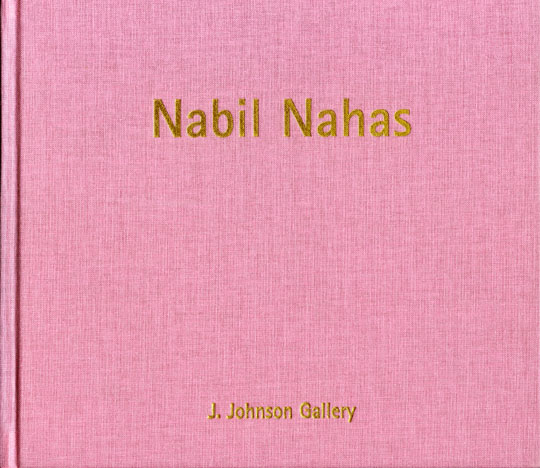

home | books | poetry | plays | translations | online | criticism | video | collaboration | press | calendar | bio
| Art Books and Catalogues | Curatorial | Poetry | Translation |
 |
|||
|
Nabil Nahas, 2002, J. Johnson Gallery, Jacksonville Beach |
|||
|
Fluid Stasis: The Progression of Nabil Nahas It as if a spell has been lifted, and the eyes are free to see what is in front of them, not what the mind, with its ceaseless recriminations and self-chastisement, dictates, buffeted by the actual political structure, and it’s concomitant troops of advertising executives. Captains of industry, but could they sail through rough emotional water? Blessed and left to drift, and the flow of paint becomes the flow of the mind, ceaselessly following. This is the effect of Nabil Nahas’ paintings: they immediately break us off from our current round of concerns because they so uncannily mimic, without illustrating, the natural world. Nahas has gone from geometry to monochromatic splashes to gold-inflected paintings whose immense scale matched their size. In 1990, he painted a series of minimal-looking paintings, in which circular shapes float on monochromatic, though variegated, grounds, which feel washed on and indicate varieties of depth. The balls could be bubbles or planets floating in the carmine ether. Nahas is at heart a painter, of that rare species that is equal parts technician, decorator, and artist. To him, the bubble paintings are interesting as a technical phenomenon. He was experimenting with varying densities of pigments, mixing hematite (diamond dust), mica, aluminum, and earth into his paint. “There was an element of chance,” he explains. “The cooking had to be perfect.” A smile. “There was a minimizing of touch. I was painting wet on wet, and it arose from a technical accident: a dot of water repellent fell on the painting and created a ring.” The painter is equally demure when referring to a pivotal transition in his work that occurred in 1991. “Eureka,” he says, referring to a diptych in acrylic (each panel measuring eight by ten inches), “could be a link – if we wanted it to.” The link to which he refers is the formal compositional usage of circular, globe-like forms. The transition, however, is immense, as it is here that Nahas begins using the actual form of the echinoderm (or starfish) attached to the surfaces of his works, thus initiating a wave of expression that would thunder and then diminish very gradually, over time, modulating into a continually more submerged use of the same natural form. |
|||